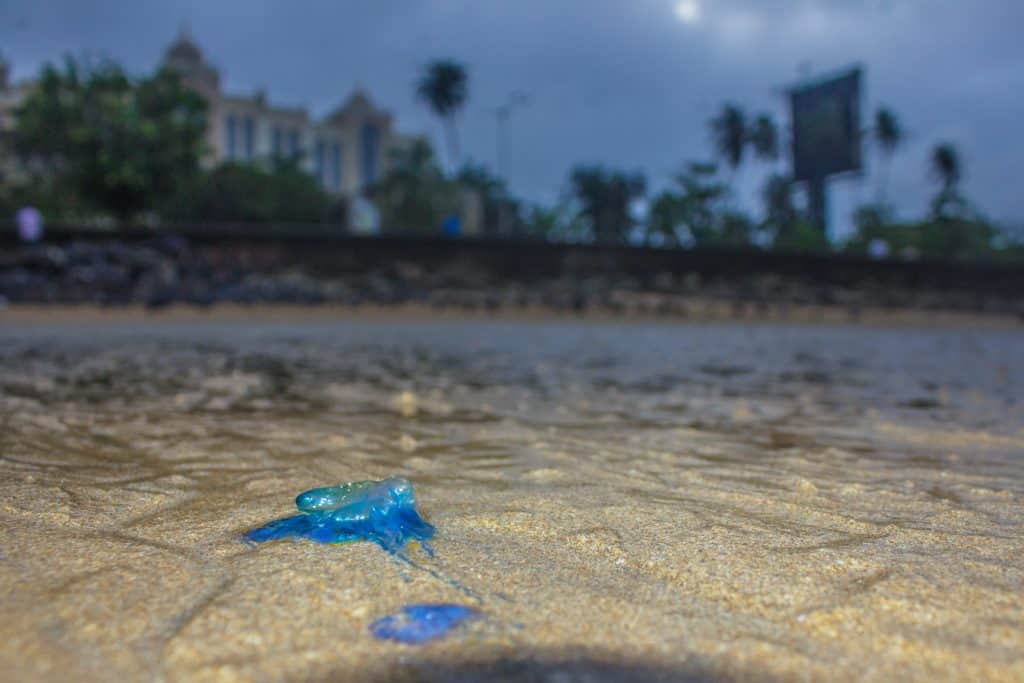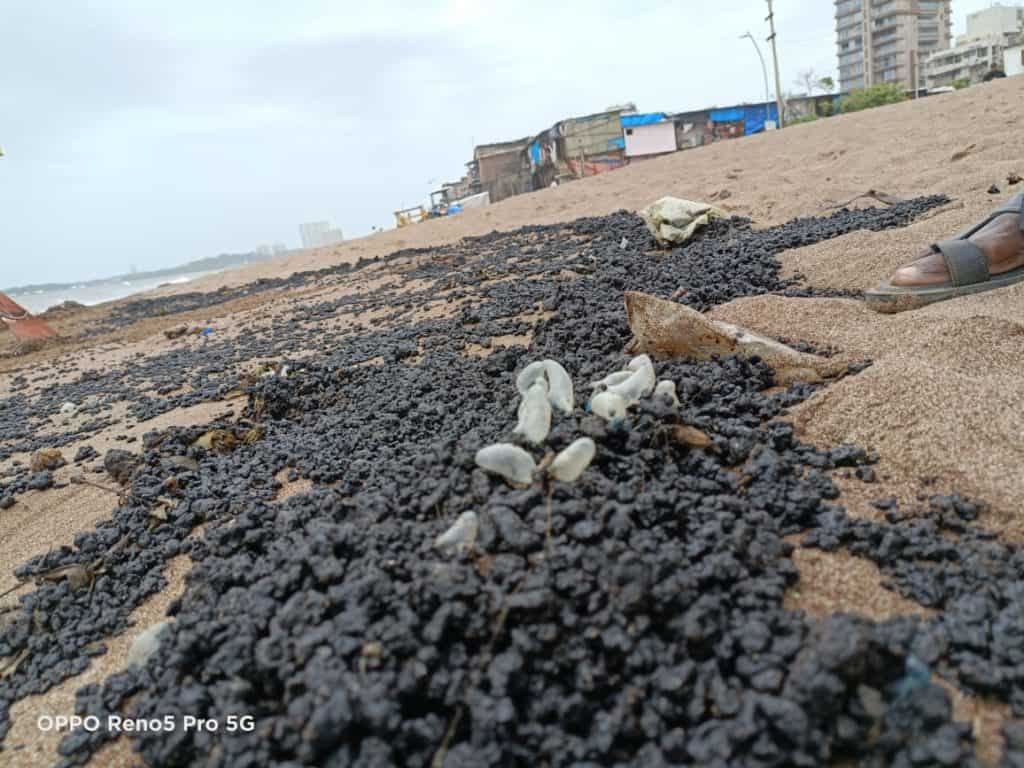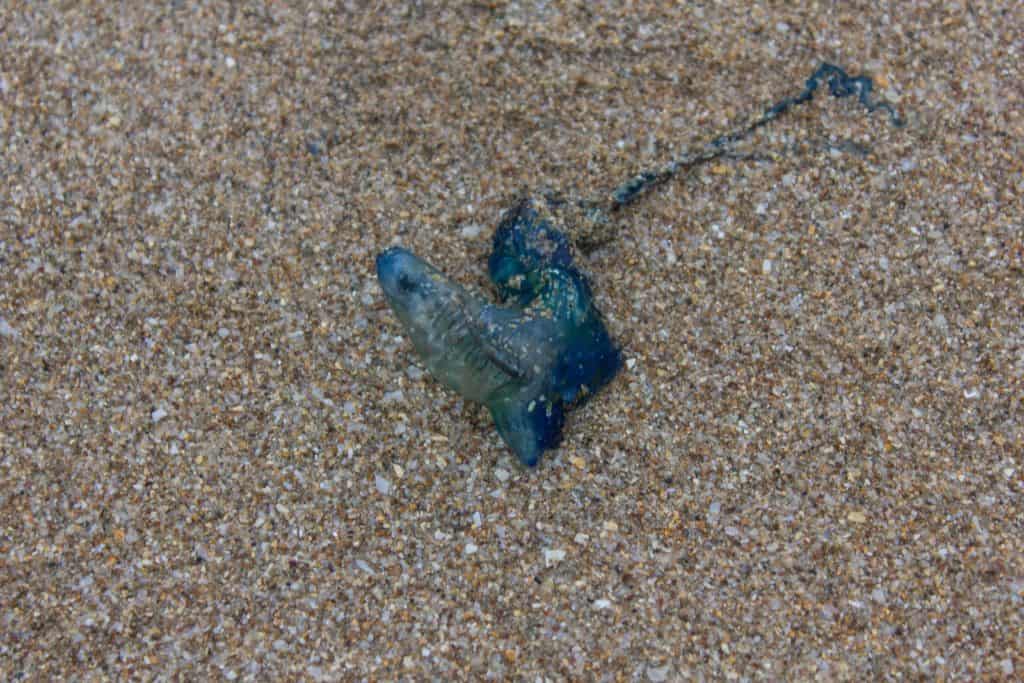Citizens deciding to take a walk on Mumbai’s beach to enjoy the monsoon weather, need to beware of getting stung by Portuguese Man-of-War, a marine species that wash ashore on Mumbai’s beaches.
Also known as Blue Bottle, they are usually found on Mumbai’s beach during the monsoon season every year. This year too, citizens have spotted hundreds of them at Versova and Juhu beach.
Last year, due to lockdown, there were hardly any cases of residents getting stung by this marine species, reported in the city .
A group of marine enthusiasts from Marine Life of Mumbai (MLOM), posted an Instagram post for people to know a few things about the Portuguese Man-of-War.
“These marine species are washed ashore during the very high wind blows. Thousands of Portuguese Man-of-War can be seen stranded at Juhu, Versova, and other beaches in the city. They look like jellyfish, but they are ‘siphonophore’. We have shared a detailed post on social media too. We advise that people should not touch them at all since it is highly venomous,”said Shaunak Modi, Director of Coastal Conservation Foundation, who clicked photos of the marine species on Juhu beach in the last week of July.

What is a Blue Bottle?
Portuguese Man-of-War or Blue Bottle are not jellyfish. They look like plastic strewn on the beach and have a body resembling a plastic bubble and they have long tentacles.
Shaunak added, “They have a transparent gas-filled bladder that helps them float along with tentacles.”

Are their tentacles harmful?
Abhishek Satam, a Mumbai-based biologist, said, “The tentacles are like a long thread and are several meters long and thin. Their tentacles can sting even if the organisms are dead.”
Shaunak further added, “A close look at the Blue Bottle reveals that the tentacle is covered in tiny capsules of venom cells. The venom capsules can remain active for quite a while on the beach. So we advise people not to touch these species at all. People walking barefoot need to be careful.”

If you come in contact with their tentacles
A person walking barefoot on the beach can get stung which will cause burning pain and irritation. It further leads to muscle weakness.
“One can gently pour seawater on the skin without rubbing it or treat the wound with hot water and visit the nearest hospital for treatment. A person can recover within 1-2 days after getting medical treatment. It can cause unbearable pain,” said Satam.
In 2018, over 100 citizens reported getting stung by this marine species on various beaches in Mumbai – Juhu Chowpatty, Girgaum Chowpatty, and Aksha beach. So far, this year no injured cases have been reported.
Advisory by authorities
“In association with the Maharashtra Forest Department and the Mangrove Cell, we have created an advisory that is printed and posted at various locations that will help people. The lifeguard at the beaches is well aware of these species. While the beaches are not open this year for an entire day, there are very few cases of people being stung,” said Modi.
After many cases were reported in 2018 in Mumbai, the local body created a lot of awareness.

Why is it called Portuguese Man-of-War?
This marine species’ upper body structure (gas-filled bladder, or pneumatophore) resembles an 18th-century old warship. Due to which it is named as Portuguese-Man-of War. “It also resembles the hat of the Portuguese warrior. Unless there is very high wind, they do not get washed ashore,” said Satam.
